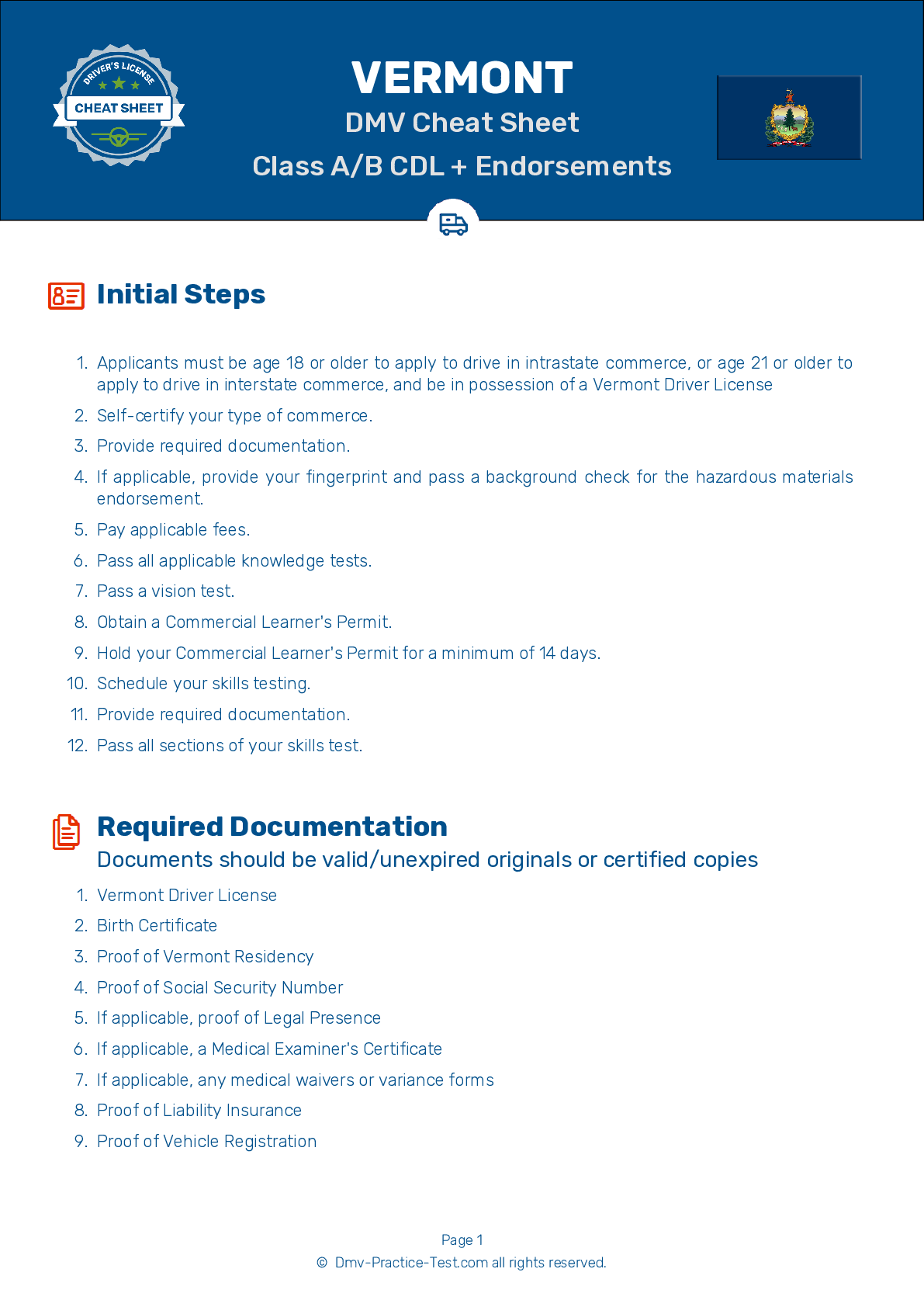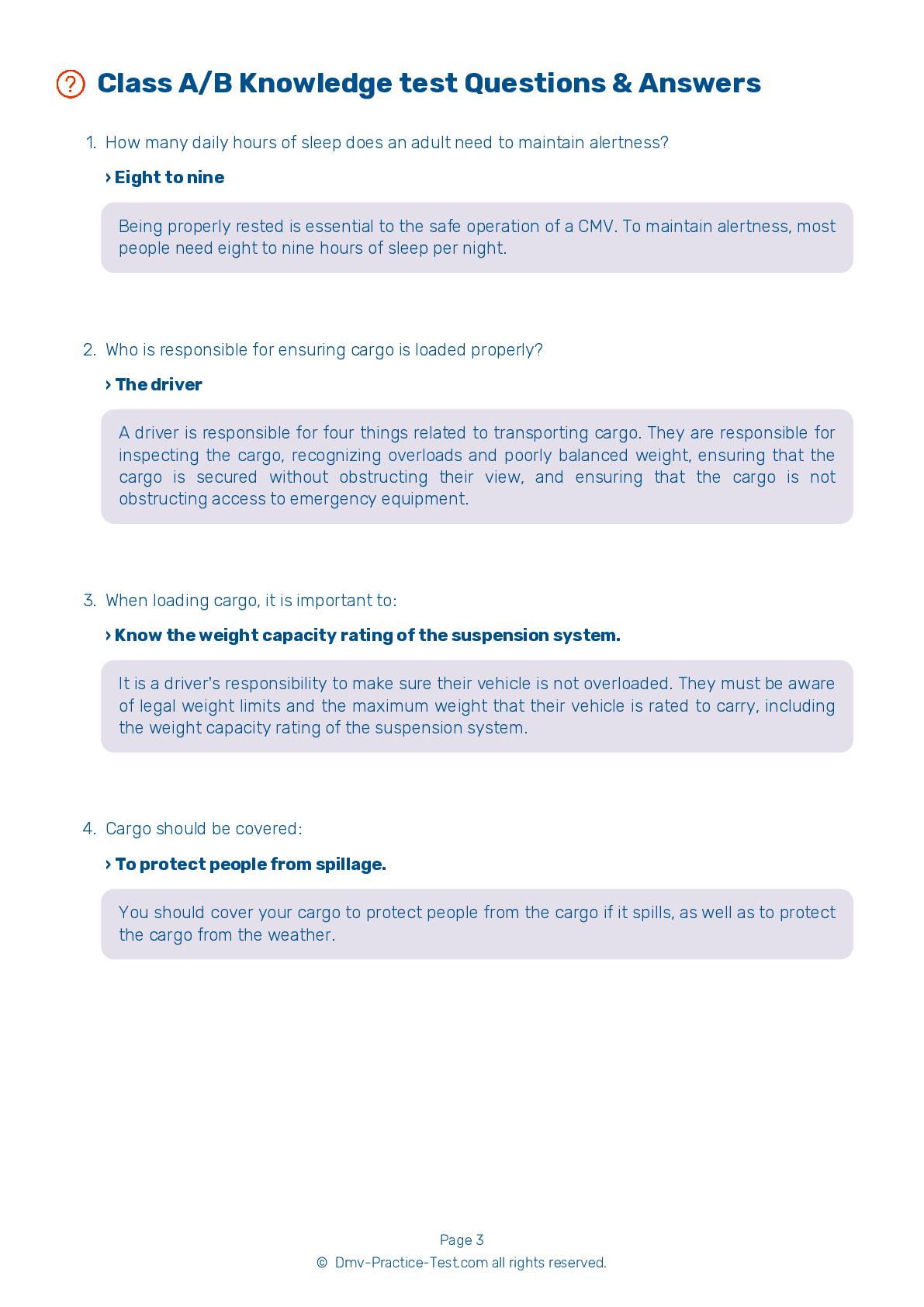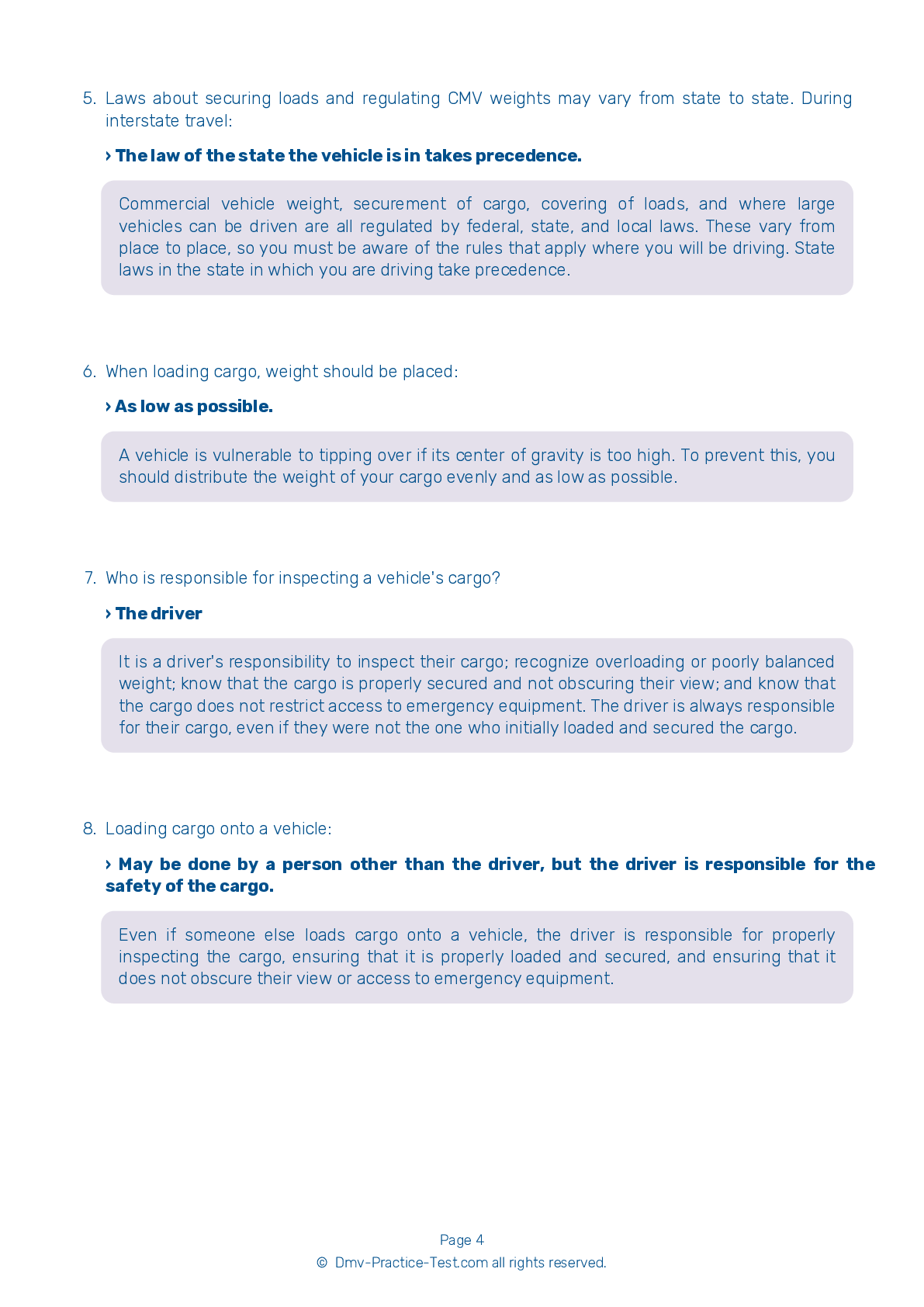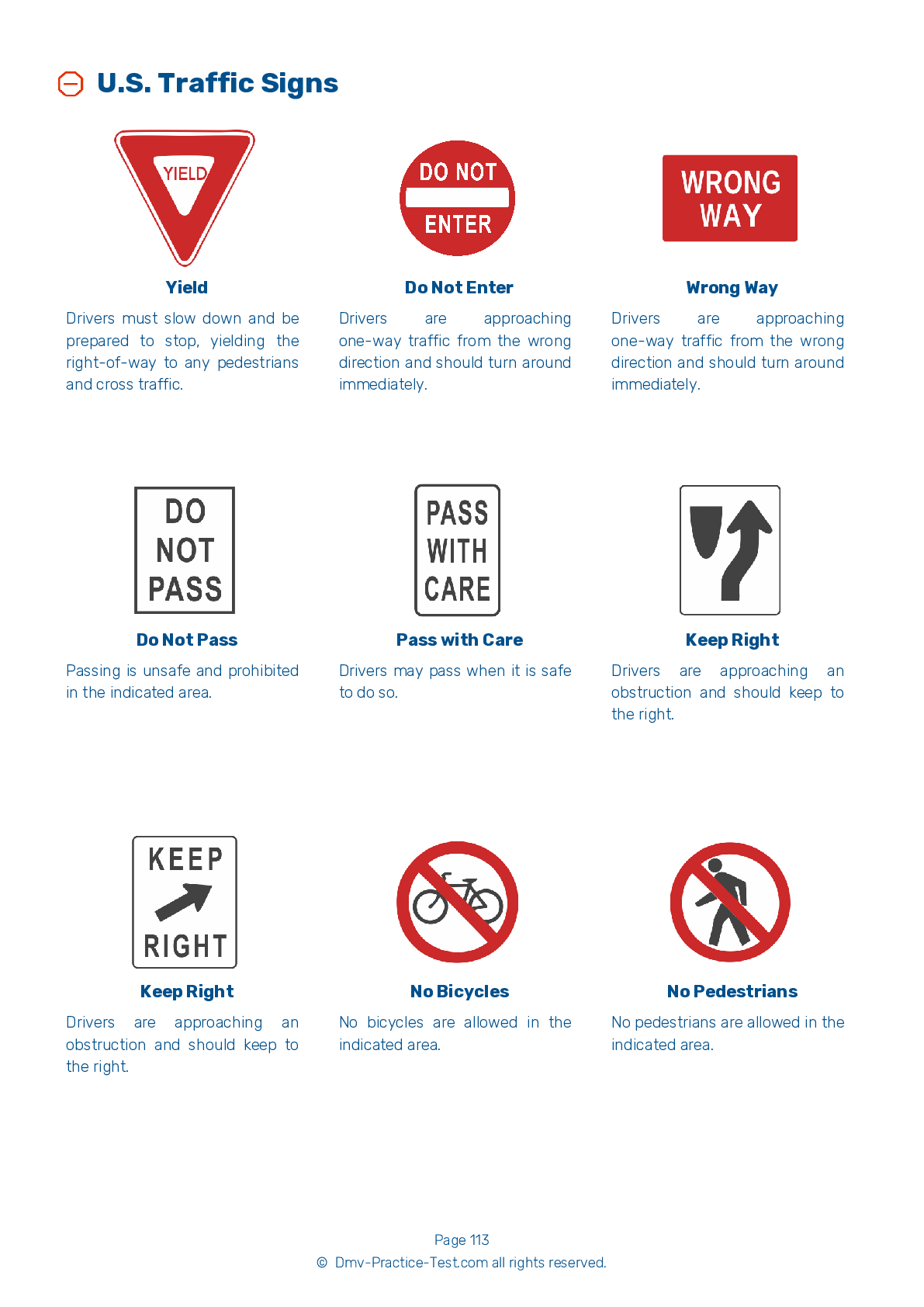Class B Driving Test | Vermont 2025 #2 Page 7 of 7
Train for FREE online with our Vermont class B license test. The official exam test consists of several obligatory parts, with all of them checking your knowledge of different blocks of road rules. If you need to obtain a VT CDL class B permit in 2025, practice as much as possible. Free sample tests published on our website will help you check and improve your knowledge and boost your grades. Please bear in mind that CDL class B requirements may vary from state to state.
43 . Placards should be used:
Warning placards are required to be used any time a vehicle is carrying designated types and amounts of hazardous materials. A placarded vehicle must display placards on all four of its sides.
44 . With the exception of the straight line backing exercise, a driver may exit their vehicle and check its position during testing exercises up to:
A driver is allowed to exit their vehicle to check its position during any basic vehicle control skills test exercise. This action is called a "look." During the straight line backing exercise, a driver may not exceed one look. During any other exercise, a driver may not exceed two looks.
45 . When driving at night, you should do all of the following, except:
To ensure that you can see as well as possible, don't wear sunglasses when driving at night. If you wear eyeglasses, make sure they are clean and unscratched. Make sure you are rested and alert before driving at night.
46 . An applicant for a CDL must be a minimum of:
In Vermont, you must be at least 18 years old to obtain a CDL. To be licensed to operate in interstate commerce, you must be at least 21 years old.
47 . Why do large vehicles use air brakes?
If used and maintained properly, air brakes are a safe and effective way to stop large, heavy vehicles.
48 . Texting while driving is especially dangerous because:
Texting while driving is particularly dangerous because it is both a mental and physical distraction to the driver. In addition to diverting a driver's mental attention away from the road, texting requires a person to remove at least one hand from the vehicle's controls.
49 . Which of the following is a time when the vehicle should be downshifted?
It is particularly important that you downshift before starting down a hill or entering a curve.
50 . If a vehicle is equipped with an Anti-Lock Braking System (ABS), when the vehicle is started:
After starting the engine of a vehicle equipped with an Anti-Lock Braking System (ABS), the indicator light should come on and then turn off. If the light stays on, something is wrong with the ABS.
See the exact questions that will be on the 2025 Vermont DMV exam.
99.2% of people who use the cheat sheet pass the FIRST TIME
Lillian MCcranie explains how our CDL study guide was helpful in passing the exam and recommends it to everyone.
Cameron tells us how he purchased the CDL exam, and found it to be a useful tool which helped him pass the exam and find a job.



